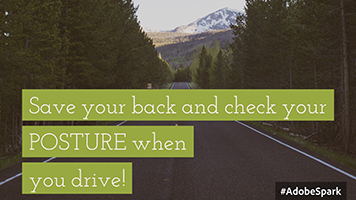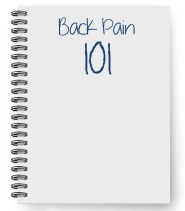What’s the Difference Between a Disc “Bulge” and a “Herniation?”
George Rappard, MD and Anand Joshi, MD
Sometimes, being able to spot the differences in something is not only elusive to lay people, but to professionals as well. This is the case with abnormalities in the disc, the cushion between the bones of the back, called the vertebrae.. Being able to identify disc abnormalities is important because they can be painful. While doctors can easily identify a large or obvious abnormality of the disc, being able to define more subtle abnormalities can be difficult. This difficulty led several spine related professional medical societies, the American Society of Neuroradiology, the American Society of Spine Radiology and the North American Spine Society to develop recommendations for how to name certain conditions of the disc. The first set of recommendations was published in 2001. These recommendations were later revised in 2014. Since first published, these recommendations have been adopted by major orthopedic, neurosurgical, radiologic and rehabilitation organizations in the United States.
Symptom Story: Muscle Spasms
Jennifer L. Kurz, MD
Many patients complain of muscle pain, tightness, or spasms. But what exactly are muscle spasms, how do they develop, and how can we treat them? Commonly, muscle spasms are normal responses to muscle overexertion, pain, or fatigue. However, in some circumstances, they imply serious systemic or neurological disease. It is important to understand the timing, frequency, duration, pattern, and overall setting in which muscles spasms occur. The following definitions are important to understand:
A muscle spasm is a sudden, involuntary contraction of one or more muscles. A spasm results from an abnormally sustained muscle contraction and is often painful. Various muscles may develop spasms, including the small intrinsic hand muscles of a musician to the larger “charley horse” calf muscles of a runner. Muscle spasms may involve the skeletal muscles of the limbs and spine, responsible for locomotion and upright posture, or the smooth muscles lining the hollow, tubular internal organs of our body, such as the muscles lining the colon or bladder. Skeletal and smooth muscles have different embryological origins, functions, innervations, and physiologies. For the purposes of this discussion, the focus will be on skeletal muscle spasms.
Continue reading about Muscle Spasms at KnowYourBack.org.
“Driver” Tops Spine Specialists’ List of Most Back-Breaking Jobs
 “Driver” tops the list of careers that spine specialists consider most harmful to back health, according to a member survey from the North American Spine Society (NASS). Other careers on the “Top 10 Back-Breaking Jobs” list are construction worker, nursing, office worker, manual laborer, dentistry, warehouse worker, mechanic, factory worker
“Driver” tops the list of careers that spine specialists consider most harmful to back health, according to a member survey from the North American Spine Society (NASS). Other careers on the “Top 10 Back-Breaking Jobs” list are construction worker, nursing, office worker, manual laborer, dentistry, warehouse worker, mechanic, factory workerPinched Nerve
Faisel Zaman, MD, PC
Many patients will come in saying “Doctor, I think I have a pinched nerve”. What exactly does this mean? What is a “pinched nerve”? Does a pinched nerve cause back pain? Is there really such a diagnosis? Well, yes and no.
In order to delve into this concept, we need to initially start with very simple terms, and a brief anatomy lesson. The human nervous system is broken down broadly into two parts. These are the central nervous system or CNS and the peripheral nervous system or PNS. The CNS is composed of the brain and spinal cord, which branches off into the spinal nerves, feeding the rest of the body. When these spinal nerves exit the spine, the PNS starts. Thousands of nerves exist in the human body, in essentially every body part; these nerves are all part of the PNS…
Continue reading about Pinched Nerves at KnowYourBack.Org.
Artificial Disc Replacement
Ali Moshirfar, MD
Discs are the structures that exist between the vertebras (bones) in your spine. Discs allow for shock absorption and motion between the vertebras. However, unfortunately because of the natural aging process, discs can degenerate. During this degenerative process, which can begin as early as in our 20s, the discs lose some of their water content and become more dry and prone to injury. This in turn reduces their ability to move and absorb shock between the vertebras leading to common complaints of low back and neck pain as well as nerve impingement. When discs are significantly degenerated one can experience chronic pain. When discs herniate or bulge out of their normal space this can lead to nerve impingement which can cause leg pain (sciatica) or arm pain.
In the past when conservative treatments (medications, rest, physical therapy and injection procedures) have failed, most surgeons have resorted to fusion of disc. However, with disc replacement, the degenerated and/or herniated disc can be replaced to relieve pain and maintain motion. Avoiding fusion is advantageous as it decreases stress on other adjacent discs which in turn can degenerate more rapidly and maintain great degree of motion. However, not everyone is a candidate for disc replacement, and some factors to consider are the extent of the disc degeneration or herniation, stability of the spine, prior surgeries, and the bone quality of the patient. Your surgeon can best evaluate your condition and recommend the best course of treatment.
Spine Imaging – Why Did My Doctor Order This?
Rachel Cengia, PA-C

If you see a doctor for a neck or back problem, he or she may order several different types of imaging to assist in determining your diagnosis and possible treatment options. It can be confusing or frustrating to undergo multiple studies if you don’t understand the reasoning behindthem. These studies are performed and interpreted by radiologists, physicians who possess specialized training in using imaging to arrive at a diagnosis. The radiologist will prepare a report, based on the study findings, for your spine specialist. In many cases, your spine specialist will also review the study images themself. Here is a quick synopsis as to what a spine specialist is looking for on different types of studies:
X-ray: Basic x-rays provide the doctor with information on the bones in the neck or back. They can help show if there are degenerative changes (arthritis) and any signs of instability. They also demonstrate any fractures that may be present.
MRI: An MRI helps the specialist to better visualize the discs, nerves and joints in your neck or back. The study shows if there is any compression on the spinal cord or individual nerves. An MRI can provide information on any tumors, cysts or fluid that may be present. An MRI should always be obtained in cases where there is persistent pain or if there are any neurological symptoms. An MRI does not submit the patient to radiation.
CT Scan: This study gives a more in-depth view of the bones in the spine. It provides detail that an x-ray cannot, and the doctor can look at very thin sections of the bone (across the spine or up and down) to obtain more information than x-rays can. It can be helpful to better visualize fractures, or provide more information for surgical planning. It can also help after surgery to visualize any hardware that has been placed, such as in a fusion and to monitor if the anticipated fusion is taking place.
CT Myelogram: This is a CT scan with the addition of something called “contrast.” Contrast is a dye that is injected through a spinal injection to better visualization the contents of the spine. It may be ordered for someone who can not undergo an MRI (usually due to a pacemaker or other implants). It can also be helpful after surgery to visualize both nerves and hardware.
Discogram: A discogram is a study that may be used to help determine which disc may be causing back pain. This study can be helpful not only in diagnosing the cause of back pain but can limit the extent of any future surgery by identifying painless discs that might look abnormal on MRI. A discogram is not performed unless your spine surgeon feels that it would be helpful. There are specific indications for ordering one, and this is a study that should be discussed with your doctor.
There are many different studies that can be ordered by your doctor to help determine your diagnosis and best treatment options. Discussing the need for and results of these studies with your physician is an important part of your care.
Road Trip POSTURE
 Relatively low gas prices, high airfare and painfully long TSA lines are pushing more families than ever to head out on the highways this summer. But before the rubber meets the road, spine specialists caution travelers to check their “POSTURE,” an easy-to-remember acronym for seven tips to keep back pain at a distance.
Relatively low gas prices, high airfare and painfully long TSA lines are pushing more families than ever to head out on the highways this summer. But before the rubber meets the road, spine specialists caution travelers to check their “POSTURE,” an easy-to-remember acronym for seven tips to keep back pain at a distance.
“Many people think of a road trip as a lazy and inexpensive vacation, but it is actually a tough workout for your back and can end up costing you big in health care costs and lost work down the road,” said Chad Patton, MD, an orthopedic surgeon and the chair of the NASS Public Affairs Committee. “By using the seven preventive tips from ‘POSTURE” this summer, traveling families can stay pain-free and keep the focus on enjoying this special time together.”
Back Pain 101
Anand Joshi, MD

Eight in 10 people will experience back pain at some point in their lives. In most cases, the pain is harmless and goes away over time. Let’s discuss some common concerns about back pain:
Why does my back hurt?
There are various reasons why the back can hurt, including muscle pain, disc pain, joint pain, or nerve pain. In most cases, these are not harmful or dangerous. Of course, there are some instances when pain can be a symptom of a more serious problem, such as a fracture, infection, or cancer affecting the spine. Thankfully though, these conditions are very rare, and usually only affect people with special risk factors.
My back has been bothering me for days. What should I do?
First off, don’t be alarmed! Remember that back pain is extremely common, and usually not associated with anything harmful or dangerous. An over-the-counter anti-inflammatory, combined with some ice may be very helpful. Although you may need to take it easy for a while, it is best to stay as active as possible, and to generally avoid bed-rest. Your symptoms will often improve over time.
When should I see a doctor for back pain?
Pain that is severe, lasts several weeks, and keeps you from participating in normal, daily activities, should not be ignored. Even if you have not had pain for several weeks, you should seek medical care sooner if you have special risk factors for cancer, infection, or fractures that may affect the spine. Finally, remember to contact a doctor immediately if you notice fever, chills, or new neurological symptoms. These could include new numbness, weakness or changes in urination or bowel movements.
A Field Guide to Foam Rollers
Justin Goehl, DC, MS

Any regular gym goer has come to encounter the dreaded “stretching area,” filled with mats, bands, machines, and those odd cylindrical objects that mimic modern torture devices. Those cylindrical objects are foam rollers, coming in different shapes, sizes, textures, and materials. Let’s learn a little bit more about these devices and how they fit into your current exercise routine:
Types: Foam rollers can be made of foam, PVC piping, or hard rubber material and offer various textures. Different levels of firmness determine the intensity and type of therapy one receives.
Benefits: Best performed post physical activity as flexibility training and cool-down, foam rolling can decrease muscle soreness, including Delayed-Onset Muscle Soreness (DOMS) which can occur 24-72 hours post strenuous physical activity.
How it works: Foam rolling is a soft tissue treatment for trigger points (painful spots in the muscle) and tight muscles using a release technique similar to that of massage. Rolling targets fascia, the connective covering of your muscles, to break up any adhesions and increase blood flow to the area, decreasing pain while improving flexibility and overall function.
Best Practices: The intensity of the exercise is completely controlled by the amount of weight you apply to the area while rolling. Use upper and lower body strength to regulate. When rolling, focus on slow controlled movements that reach the entire length or width of the muscle.
With these tips and a little bit of practice, you are ready to navigate the once scary stretching area with ease.
Multi-Society Pain Workgroup Successfully Preserves Popular Treatment
Last month The Multi-Society Pain Workgroup, a coalition of 15 societies, attended hearings held by the Washington State Health Care Authority’s Health Technology Clinical Committee. The Workgroup successfully argued that coverage should continue for spinal injections, a common back pain treatment. This decision is being praised as a win for back pain patients. For full coverage, visit Pain Medicine News.
